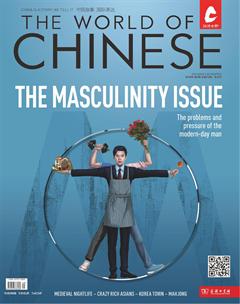WINE, WOMEN & SONG
HATTY LIU
An11th-century dynasty gave the world the modern restaurant—complete with menus, waiters, and the feudal version of Michelin Stars
一千多年前,中国就已经有了现代饭店的雏形,菜单、服务员,还有“米其林星级”
So you want to start a restaurant in China—circa 1000 CE.
This isnt a bad idea. The timing is perfect: In 965, Song Emperor Taizong lifted the curfew laws that had suppressed nightlife across Chinese capitals during predecessor dynasties. In the Song capital of Bianliang (present-day Kaifeng), suddenly, “Night markets stayed open until midnight and resumed at dawn, and there was mischief all night long,” wrote 12th-century gourmand Meng Yuanlao
(孟元老) in Reminisces of the Eastern Capital.
Location is everything. According to Mengs contemporary, the historian Cai Tao (蔡絳), Bianliang had a dedicated street “teeming with night markets and restaurants…carriages and crowds, and lanterns that lit up the sky,” even keeping away mosquitoes and flies.
By the 12th century, the new Song capital, Linan (Hangzhou), had replaced Bianliang as the worlds largest city, with about a million inhabitants. The party didnt end, though: “On the main street of Hangzhou, there was commerce day and night,” Linan native Wu Zimu (吴自牧) recalled in his memoirs, listing “roughly” 600 dishes found in the capitals hundreds of teahouses, bars, high-end restaurants, and noodle shops.
Song restaurants even had their own “star rating” system—as Lu Zhishen, a maverick monk from the 14th-century novel Outlaws of the Marsh, finds out the hard way. Leaving his monastery for a drink one evening, Lu is rejected at every watering hole in town, his alcohol-starved brain taunted by rows of “tavern flags jutting from the eaves.” Eventually, he finds a dive “deep among the apricot blossoms at the edge of town,” hung with only a grass curtain, and willing to serve meat and alcohol to the Buddhist monk.
Adapted from military flags, the tavern flag or jiuqi—also known as jiuwang (tavern streamer), jiuhuang (tavern drape), or jinpei (brocade flag)—had become common business advertising by the eighth century. A diner dishing up one or two specialties might put up just one jiuqi inscribed with their name or main product, but a sit-down restaurant with a menu had to have, at least, a second flag.
Three flags were never used—“three drapes” (sanhuang) being a homonym for “dishonesty”—but four indicated that the chef had mastered a regional culinary style. At a five-flag restaurant, banqueting officials, reveling merchants, and even ordinary diners, could command dishes from anywhere in China to their table.
In fact, according to economist Nicholas Kiefer, Song innovations like menus and table service were the prototype of the modern restaurant. Kiefer stipulated in a 2011 Cornell University quarterly that public dining usually only took place at inns, where traveling strangers gathered at set mealtimes and ate whatever was served. In China, the earliest recorded inns were actually state-operated “roadhouses” that housed and fed officials on work-related journeys before the 11th century BCE.
Privately run “visiting houses” appeared in the Han dynasty, catering to lower-class itinerants; “Craftsmen, doctors, fortunetellers, healers, peddlers, and businessmen all plied their trade in the visiting houses,” stated the Book of the Han. Urbanization and the rise of commerce in the Song, though, changed the image of public eateries: State-run and privately owned jiulou
(“wine mansions”), usually the only multi-story buildings in the neighborhood, were patronized by literati, who ate upstairs in one of dozens of private dining room and were given ink and brushes should the spirit (or spirits) move them to compose poetry as they supped.
With the location picked, and flags unfurled, its time to hire staff. Waiters—known as “shops no. 2”
(店小二)—were the lynchpins to the fast-paced jiulou: “The men of Kaifeng were extravagant and indulgent. They would shout their orders by the hundreds: some wanted items cooked and some chilled, some heated and some prepared, and some iced or delicate or fat…the waiter…carried [the orders] in his head, and sang them when he got into the kitchen,” Meng wrote. “In an instant the waiter would be back, carrying three dishes forked in his left hand, while on his right arm from hand to shoulder he carried about 20 bowls doubled up, and he distributed them precisely as everyone had ordered without an omission or mistake.”
Private rooms in Hangzhous jiulou were served by “wine courtesans”
“all dressed colorfully, each competing to smile more brightly than the other,” as described in The Affairs of Wulin, a 13th-century memoir. There were also “young girls whom nobody ordered” running into the rooms to sing or loudly recite poetry for attention, as well as musicians, acrobats, and even connoisseur courtesans who helped the guests pick out their wine.
Despite these opulent dressings, jiulou and “mischief” went hand-in-glove in the publics imagination: In Outlaws of the Marsh, heroes Song Jiang and Chai Jin are eating in a private jiulou room when they hear a disturbance next door. Rushing in, they find Shi Jin, a tattooed fellow outlaw, soused and swearing—the start of a chain reaction that culminates in an all-out brawl in the capital.
Song era jiulou “went in and out of fashion regularly,” according to Meng, but conquest from the northern tribes finally brought down the curtain on debauchery in Bianliang in the 12th century, then Hangzhou a century later. Gourmet culture, though, persisted: Marco Polo referred to full-service restaurants during the Yuan dynasty, and missionary John Henry Gray wrote of 19th-century businesses similar to the Songs jiulou: A set of private apartments over a public dining room above a ground-floor kitchen, displaying the chefs skill and fresh ingredients “to persons in all classes of society…rich and poor.”
A TYPICAL SONG MENU
Starter
Hundred flavors soup
Meat dishes
Milk-steamed lamb, onion-strewn hare, fried spring fish, honey-roasted quail, fresh-cooked venison
Imitation meats
Imitation river globefish, imitation roast duck, imitation clam
Seasonal fruits and nuts
Chestnuts, honey peach, purple pear, golden tangerine, green plum, loquat
Buns and cakes
Tea, wine, and spirits
Adapted from Wu Zimus A Dream of Bianliang and Meng Yuanlaos Reminisces of the Eastern Capital

